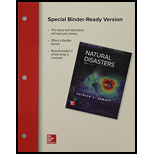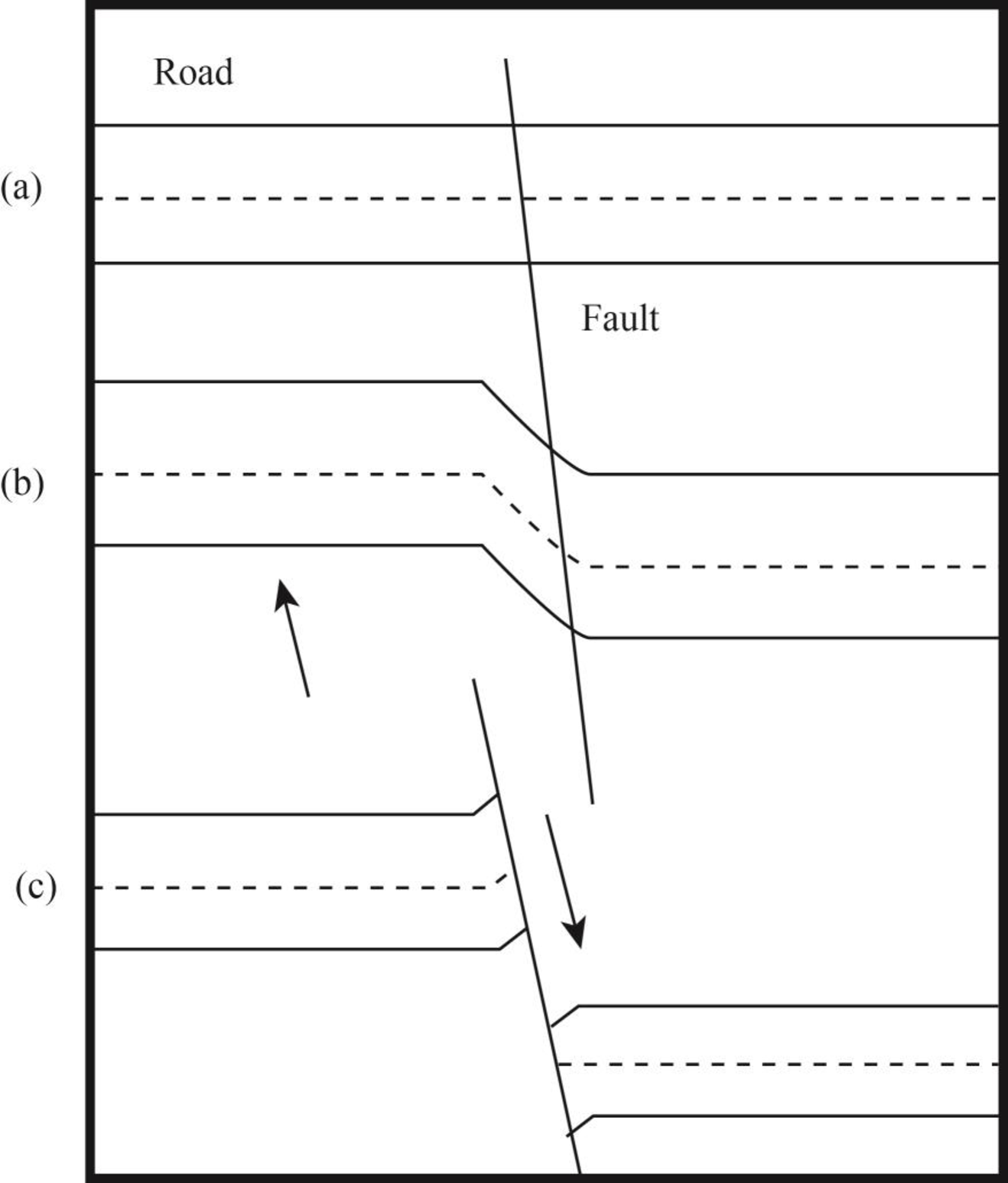
The elastic-rebound theory of faulting through a sketched map and the way it has been modified in recent years.
Answer to Problem 1QR
The elastic-rebound theory explains movement of faults by the rupture in rock through overpowering stress caused by Earth. The modification in this theory suggests that a considerable time is required to create another earthquake after a big earthquake.
Explanation of Solution
Pictorial representation: Fig.1 shows the elastic-rebound theory where (a) represents an active fault with a road, (b) represents occurrence of deformation along the fault, and (c) represents the final occurrence of deformation.

Fig.1 Schematic representation of elastic-rebound theory
After the San Francisco earthquake, the elastic-rebound theory was developed to explain movement of faults. According to seismic studies from San Andreas faults, the stress of Earth causes deformation and movement around both sides of a fault. However, rocks do not move due to this stress along the fault because of their roughness and irregularity. It results in the retardation of the movement of rocks with friction by making strong interlocking bonds. The land masses that are far from faults continue to move. The overpowering stress causes rupture in rocks at fault and both sides of fault move forward to catch or pass the rock which is away from fault. After this movement of fault, complete elastic strain is removed and new one is build up.
The former elastic bound theory still works but some modifications have emerged in recent years. These modifications suggest that most of the elastic strain is removed from the rocks after a large earthquake. A considerable time is needed to build a strain high enough to create another big earthquake.
Want to see more full solutions like this?
Chapter 5 Solutions
NATURAL DISASTERS (LOOSELEAF)-W/CONNECT
 Applications and Investigations in Earth Science ...Earth ScienceISBN:9780134746241Author:Edward J. Tarbuck, Frederick K. Lutgens, Dennis G. TasaPublisher:PEARSON
Applications and Investigations in Earth Science ...Earth ScienceISBN:9780134746241Author:Edward J. Tarbuck, Frederick K. Lutgens, Dennis G. TasaPublisher:PEARSON Exercises for Weather & Climate (9th Edition)Earth ScienceISBN:9780134041360Author:Greg CarbonePublisher:PEARSON
Exercises for Weather & Climate (9th Edition)Earth ScienceISBN:9780134041360Author:Greg CarbonePublisher:PEARSON Environmental ScienceEarth ScienceISBN:9781260153125Author:William P Cunningham Prof., Mary Ann Cunningham ProfessorPublisher:McGraw-Hill Education
Environmental ScienceEarth ScienceISBN:9781260153125Author:William P Cunningham Prof., Mary Ann Cunningham ProfessorPublisher:McGraw-Hill Education Earth Science (15th Edition)Earth ScienceISBN:9780134543536Author:Edward J. Tarbuck, Frederick K. Lutgens, Dennis G. TasaPublisher:PEARSON
Earth Science (15th Edition)Earth ScienceISBN:9780134543536Author:Edward J. Tarbuck, Frederick K. Lutgens, Dennis G. TasaPublisher:PEARSON Environmental Science (MindTap Course List)Earth ScienceISBN:9781337569613Author:G. Tyler Miller, Scott SpoolmanPublisher:Cengage Learning
Environmental Science (MindTap Course List)Earth ScienceISBN:9781337569613Author:G. Tyler Miller, Scott SpoolmanPublisher:Cengage Learning Physical GeologyEarth ScienceISBN:9781259916823Author:Plummer, Charles C., CARLSON, Diane H., Hammersley, LisaPublisher:Mcgraw-hill Education,
Physical GeologyEarth ScienceISBN:9781259916823Author:Plummer, Charles C., CARLSON, Diane H., Hammersley, LisaPublisher:Mcgraw-hill Education,





